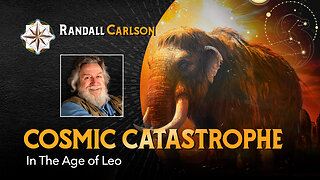Premium Only Content

NASA Discovers Super-Earth That May Support Life: All You Need To Know
Scientists have discovered a Super-Earth that is four times the mass of our planet and takes just 10.8 days to complete a whole year.
Scientists have discovered a Super-Earth that is four times the mass of our planet and takes just 10.8 days to complete a whole year.
According to the American space agency NASA, the exoplanet, called Ross 508 b, was discovered using a new infrared monitoring technique. It is located 37 light-years from us. The Super-Earth “skims in and out of its star's habitable zone”. And it revolves around a red dwarf star called Ross 508, just like our Earth orbits the Sun.
Discovery Alert!
A recently discovered exoplanet skims in and out of its star's habitable zone. It's 37 light-years from Earth and about four times our planet's mass, making Ross 508b a super-Earth. A year there, one orbit takes just 10.8 days! https://go.nasa.gov/3oSYdyG
According to Space.com, the proximity of this Super-Earth to our planet means that it is ripe for atmospheric investigation which could help researchers determine whether life could exist around low-mass stars.
Also, Read | Goddess Parvati Idol Worth ₹ 1.6 Crore Found In New York After 50 years
Astronomers in Japan had first spotted the Super-Earth earlier this year in May. The findings were a part of the study titled “A Super-Earth Orbiting Near the Inner Edge of the Habitable Zone around the M4.5-dwarf Ross 508”.
As per the research, the exoplanet orbits the star at a distance that offers temperatures conducive to the formation of water on the surface of the planet. This indicates that Ross 508 b is the habitable zone of the star.
Researchers spotted the planet near a dim star using the Subaru Telescope of the National Astronomical Observatory of Japan (NAOJ) in Hawaii. As the star is smaller in size than the Sun, Ross 508 b orbits it every 10.8 days. Moreover, Ross 508 is significantly dim, thus, the Super Earth experiences 1.4 times the solar radiation that Earth witnesses.
Also Read | A US Mattress Firm Is Looking For Professional Nappers With "ExAccording to the study, the Ross 508 is around 18% of the mass of the Sun which makes it the faintest and smallest star with an orbiting world.
Comments
The star was discovered using the radial velocity method. This technique used for locating exoplanets is more effective in finding giant worlds like gaseous planets that orbit at a distance that is too hot for liquid water.
Track Latest News Live on NDTV.com and get news updates from India and around the world.
About us https://bit.ly/3GUPFOa
Contact us +919942258153 kvk.subadhra@gmail.com
https://05a5f4we3g9xny1lh6js480l4j.hop.clickbank.net
-
 20:30
20:30
Exploring With Nug
1 day ago $4.41 earnedMissing Father of 2 FOUND Underwater In Shallow Pond!
48.2K9 -
 19:19
19:19
This Bahamian Gyal
1 day agoThe View PRAISES Michelle Obama for DITCHING TRUMP inauguration, "when they go LOW, go even LOWER"
41K43 -
 14:25
14:25
Degenerate Jay
23 hours ago $7.79 earnedThe Flash Movie Failed Because People Hate The Character? Sure.
133K17 -
 28:30
28:30
CharLee Simons Presents Do Not Talk
6 days agoSam Anthony from YourNews.com (with host CharLee Simons)
70.4K4 -
 52:34
52:34
PMG
20 hours ago $3.97 earnedHannah Faulkner and Steve Friend | EXPOSE THE FBI CORRUPTION - KASH PATEL
56.3K8 -
 25:33
25:33
marcushouse
1 day ago $39.07 earnedStarship Exploded! What Went Wrong? Flight Test 7 Explained
206K66 -
 1:00:50
1:00:50
Squaring The Circle, A Randall Carlson Podcast
1 day ago#035 Cosmic Catastrophe In The Age Of Leo - Squaring The Circle: A Randall Carlson Podcast
136K34 -
 1:33:14
1:33:14
Jamie Kennedy
1 day agoThe LA Fires...
105K30 -
 2:01:45
2:01:45
Quite Frankly
2 days ago"Inauguration Eve: Trump Time Travel Review" 1/17/25
84.7K68 -
 58:42
58:42
SGT Report
4 months agoYour REAL NEWS vs. CIA Mockingbird LIES -- Sam Anthony
206K101